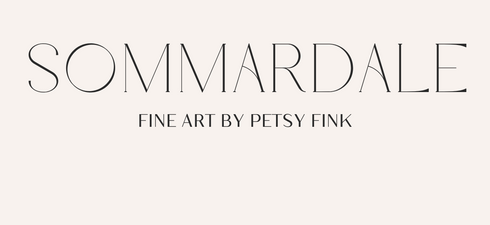The Art of Framing
The right frame can transform a piece of artwork, elevating it from a simple print to a striking focal point in your home decor. Whether you’re displaying a fine art print, an expressive piece of abstract art, or a calming nature photography print, choosing the right frame is essential to enhancing its beauty and ensuring it harmonises with your space.
Framing is more than just a protective border—it’s an extension of the artwork itself. A well-chosen frame can create balance, add depth, and even influence how you experience the piece. By selecting frames that complement both your home decor and the mood of the art, you create an environment that encourages immersion in nature and stillness.
1. Consider the Style of the Artwork
The frame should enhance the essence of the artwork without overpowering it. Different types of art call for different framing styles:
- Fine Art Prints: Timeless and elegant, fine art prints often benefit from classic frames in natural wood, black, or white. A thin metal frame can also work for a modern touch.
- Abstract Art: Minimalist frames allow the fluidity and expression of abstract pieces to take centre stage. Floating frames or slim metal frames in neutral tones work beautifully.
- Nature Photography: A frame should support the organic feel of the image. Opt for wood or soft metallic tones to enhance the sense of immersion in nature.
The key is to find a frame that complements the art rather than competes with it.
2. Match the Frame to Your Home Decor
A frame should not only suit the artwork but also fit seamlessly into your existing decor. Consider your interior style when selecting the finish and material.
- Minimalist Interiors: Sleek, thin frames in black, white, or metallic tones keep the focus on the artwork.
- Scandi & Natural Homes: Light wood frames (such as oak or ash) enhance the warmth and organic beauty of the space.
- Classic & Elegant Spaces: Dark wood or ornate frames can add a sophisticated touch, making fine art prints feel even more luxurious.
- Rustic & Bohemian Homes: Reclaimed wood frames or floating canvas mounts blend beautifully with earthy, textured interiors.
If your space is designed to be a calm, intentional retreat, opt for soft, natural finishes that enhance the tranquillity of your surroundings.
3. Frame Size: Finding the Right Balance
Proportion is crucial when framing an artwork. The frame should be substantial enough to highlight the art without overwhelming it.
- Large Artworks: A slim frame works well to keep the focus on the piece itself.
- Small to Medium Prints: A thicker frame or a mount (mat) around the image can add presence and draw the eye in.
- Gallery Walls: If creating a gallery wall, mix frame styles thoughtfully—keeping a cohesive colour palette helps maintain harmony.
Consider how the artwork fits within your space. A frame that is too bulky may feel overpowering, while one that is too thin may not do the piece justice.
4. Mount or No Mount?
A mount (mat board) sits between the artwork and the frame, adding breathing space and a gallery-like effect. Whether or not you use one depends on the piece and the desired aesthetic.
- With a Mount: Ideal for fine art prints, botanical illustrations, and minimal nature photography, as it provides a polished, airy feel.
- Without a Mount: Best for full-bleed prints, contemporary abstract art, and modern photography, keeping the composition tight and impactful.
For a subtle, refined look, choose an off-white or soft cream mount rather than stark white, which can sometimes feel too harsh.
5. Choosing the Right Glass
The type of glass or acrylic in your frame affects both aesthetics and preservation.
- Standard Glass: Affordable but can cause glare, making it harder to appreciate the artwork in bright spaces.
- Non-Reflective Glass: A great option for minimising glare while maintaining clarity.
- UV-Protective Glass: Essential for preserving fine art prints or delicate pieces in sunlit areas.
- Acrylic (Plexiglass): Lightweight and shatter-resistant, making it perfect for larger frames or homes with children and pets.
If your goal is to create a restful, intentional space, non-reflective or UV-protective glass is worth the investment to ensure your artwork remains a timeless feature.
6. Displaying Your Framed Artwork
Once framed, the placement of your artwork matters just as much as the frame itself. Consider the following:
- Eye-Level Hanging: The centre of the artwork should be at eye level.
- Grouping Prints: When arranging multiple framed prints, maintain equal spacing to create a sense of balance.
- Leaning Frames: If you prefer a relaxed, informal look, lean larger framed pieces against a wall or on a shelf.
- Complementing Natural Light: Positioning artwork near natural light sources enhances the depth and beauty of nature photography and fine art prints.
Final Thoughts: Framing as an Extension of the Art
My paper prints come unframed (canvas print come with frame). I believe you and I should co-create at that point. I create the art, you choose the frame (and mat if you like). My favorite way to frame my paper print artwork is in a sturdy natural wood frame with a huge off-white mat.
A well-chosen frame does more than just protect your artwork—it enhances its impact and integrates it seamlessly into your home decor. Whether showcasing abstract art, fine art prints, or nature photography, the right frame can elevate your space, creating a setting that encourages immersion in nature and stillness.
By selecting frames that align with your personal style, support the essence of the artwork, and complement your surroundings, you craft an environment that is not just aesthetically pleasing but also deeply restorative.
In a world that often feels fast-paced, the art of framing allows you to slow down, appreciate the beauty of your space, and create a home that feels truly intentional.
Much love,
Petsy

